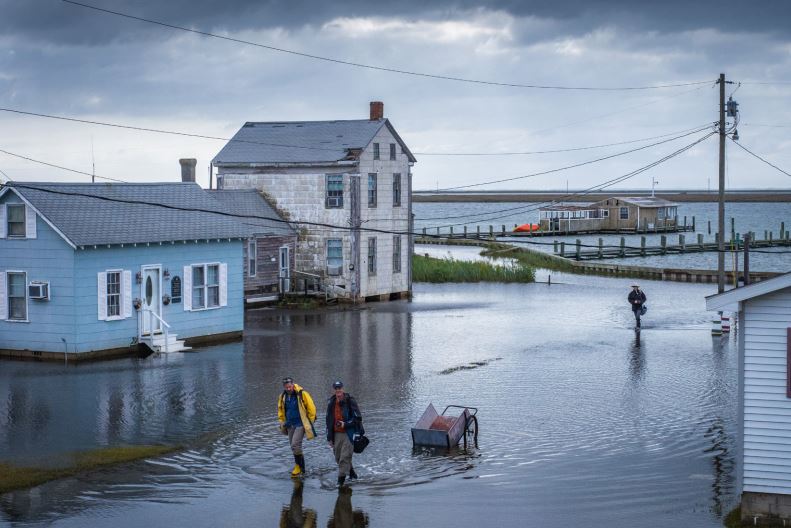Washington, D.C. – Sea levels along U.S. coastlines are projected to rise between 10 to 12 inches on average above current levels by 2050, according to a new report by several federal agencies.
 The National Oceanic and Atmospheric Administration (NOAA) joined NASA and other federal agencies in releasing “Global and Regional Sea Level Rise Scenarios for the United States” that forecasts sea levels to the year 2150, and for the first time includes near-term projection for the next 30 years.
The National Oceanic and Atmospheric Administration (NOAA) joined NASA and other federal agencies in releasing “Global and Regional Sea Level Rise Scenarios for the United States” that forecasts sea levels to the year 2150, and for the first time includes near-term projection for the next 30 years.Relative sea level along the contiguous U.S. coastline is expected to rise on average as much over the next 30 years (0.25-0.30 meters over 2020–2050) as it has over the last 100 years (1920-2020).
By 2050, the expected relative sea level will cause tide and storm surge heights to increase and will lead to a shift in U.S. coastal flood regimes, with major and moderate high tide flood events occurring as frequently as moderate and minor high tide flood events occur currently.
Without additional risk-reduction measures, U.S. coastal infrastructure, communities, and ecosystems will face such consequences as:
- Minor/disruptive high tide flooding (HTF) about 0.55 meters above mean higher high water is projected to increase from a U.S average frequency of about three events per year in 2020 to more than 10 events by 2050.
- Moderate/typically damaging HTF about 0.85 meters above mean higher high water is projected to increase from a U.S. average frequency of 0.3 events each year in 2020 to about four events per year in 2050.
- Major/often destructive HTF about 1.20 meters above mean higher high water is projected to increase from a U.S. average frequency of 0.04 events per year in 2020 to 0.2 events each year by 2050.
- Across all severities (minor, moderate, major), HTF along the U.S. East and Gulf Coasts will largely continue to occur at or above the national average frequency.
Forming the Interagency Sea Level Rise Task Force, these agencies developed their near-term sea level rise projections by drawing on an improved understanding of how the processes that contribute to rising seas – such as melting glaciers and ice sheets as well as complex interactions between ocean, land, and ice – will affect ocean height.
The task force projects an uptick in the frequency and intensity of high-tide coastal flooding, otherwise known as nuisance flooding, because of higher sea level. It also notes that if greenhouse gas emissions continue to increase, global temperatures will become even greater, leading to a greater likelihood that sea level rise by the end of the century will exceed the projections in the 2022 update.
